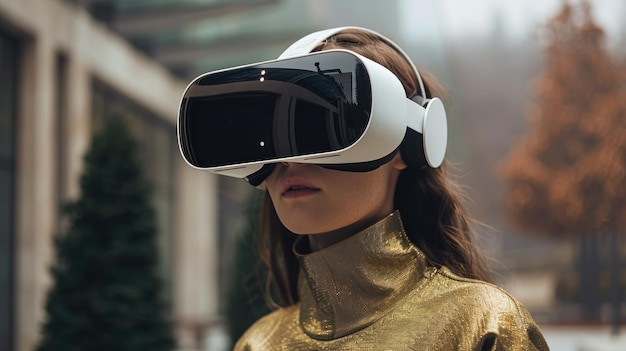As we approach the end of 2024, augmented reality (AR) glasses have evolved from a futuristic concept to a more accessible technology. These devices, which overlay digital information onto the physical world, have found applications in various sectors including entertainment, education, and professional work. This article explores the current status of AR glasses, highlighting key models and their uses, to answer the question: Are we still wearing AR glasses?
Apple Vision Pro
Apple's entry into the AR glasses market, the Apple Vision Pro, has set a new standard for immersive experiences. Launched with much fanfare, these glasses integrate seamlessly with the Apple ecosystem, offering users a wide range of applications from augmented reality gaming to real-time translations. The sleek design and intuitive interface make it a desirable accessory for both Apple enthusiasts and newcomers. Its impact on how we consume media and interact with the digital world is profound, making it a flagship example of AR glasses' potential.
Google Glass Enterprise Edition 2
Google Glass has made a significant comeback with its Enterprise Edition 2, focusing on professional and industrial applications. These glasses offer hands-free access to information, facilitating tasks in manufacturing, healthcare, and logistics. With improved battery life, enhanced display technology, and robust build, they're designed for the rigors of daily use in challenging environments. This pivot to enterprise needs underscores the practical, work-related applications of AR technology, demonstrating its value beyond consumer entertainment.
Snap Spectacles 3
Snapchat's Snap Spectacles 3 takes a different approach to AR, emphasizing content creation and social interaction. These glasses allow users to capture photos and videos from a first-person perspective, adding digital elements before sharing on Snapchat. While not as technologically advanced in terms of AR capabilities as other entries, they represent an important step towards wearable tech that enhances social media experiences. Their stylish design and ease of use appeal to a younger demographic, showcasing the lifestyle aspect of AR glasses.
Microsoft HoloLens 2
Microsoft HoloLens 2 is a powerhouse in mixed reality, blending AR and VR to create highly interactive environments. Aimed at professionals and developers, it offers unparalleled spatial awareness, hand tracking, and holographic computing capabilities. This device finds its strength in collaborative projects, education, and training simulations, where its detailed holograms can simulate real-world scenarios. Despite its higher price point, the HoloLens 2's advanced features make it a valuable tool for industries looking to leverage cutting-edge technology.
Magic Leap 1
After a rocky start, Magic Leap has refined its vision with the Magic Leap 1, targeting enterprise customers with its unique spatial computing capabilities. This lightweight, wearable computer offers a dynamic platform for creating and interacting with digital content in the real world. Its application in healthcare, retail, and education demonstrates the versatile potential of AR technology. With a focus on enhancing productivity and collaboration, Magic Leap 1 represents a significant leap forward in making AR a practical tool for businesses.
Nreal Light
Nreal Light brings AR glasses to the consumer market with a balance of performance, style, and affordability. Compatible with smartphones, these glasses project high-quality visuals for movies, games, and apps directly into your field of vision. Their lightweight design and fashionable appearance make them one of the most user-friendly options available, breaking down barriers to AR adoption. Nreal Light's approachability and functionality highlight the growing trend of integrating AR into everyday life.
Vuzix Blade Upgraded
Vuzix Blade Upgraded smart glasses cater to both professional and personal use, featuring a see-through AR display that delivers notifications, navigation, and hands-free calls directly in front of the wearer. With built-in Alexa voice control, users can interact with the internet and control IoT devices without lifting a finger. The Vuzix Blade is particularly useful for field technicians and warehouse workers who need quick access to information while keeping their hands free. Its practicality and versatility showcase the everyday utility of AR glasses.
Epson Moverio BT-300
Epson's Moverio BT-300 AR glasses are designed with a specific focus on drone piloting and multimedia consumption. Featuring a transparent Si-OLED display, they provide a clear, bright image even in daylight, making them ideal for flying drones or augmented reality gaming. The Moverio BT-300 serves as a niche product within the AR glasses market, but its specialized applications underscore the diverse potential of AR technology to enhance specific hobbies and professional tasks.















Comments
0 comment